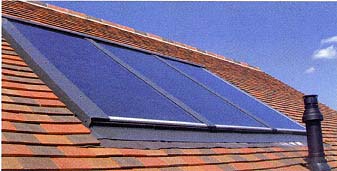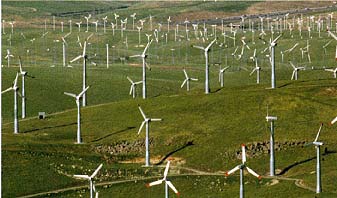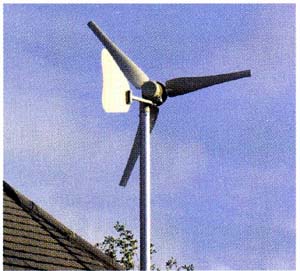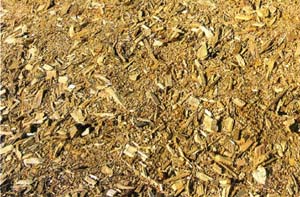Most household power is supplied to the home by a power company that takes the electricity from a variety of sources, including conventional power stations and "alternative" sources. In some areas it is possible to choose which source your electricity comes from. It is also possible to supplement your domestic supply with your own power-generating systems. Of these, solar power systems are the most common, although wind-power and biomass systems are becoming increasingly viable.
SOLAR ENERGY SYSTEMS
The power of the sun has been used for many years, and the options for its use in domestic situations are always increasing. There are two main types of solar energy systems. One uses the sun’s rays to directly heat a panel of water, which is then channeled into the home heating system. In the other system, panels of solar cells absorb the sun’s rays and convert them into electricity.
The perceived drawbacks of solar systems are that they can be expensive, are not particularly attractive to look at, and, obviously, rely on the presence of sunlight. However, prices are coming down and panel efficiency is improving. The amount of energy a panel can supply is actually quite impressive. In the right climate—panels rely on sunlight but not high temperatures—up to a half of household demand may be met by solar power. There are also companies that produce panels shaped like tiles, so that the overall look of the roofline can be maintained.
It is also possible to use solar energy in a more passive way. Using the sun to heat your house by clever window design is an important consideration, especially if you are building an extension or making major alterations.

Above: Solar panels --- Domestic solar energy systems have become so efficient that even on relatively dull or overcast days, solar panels are able to generate usable levels of energy.
HYDROELECTRIC POWER
Hydroelectric power has become a major electricity source. Although it is seen as “clean” energy, there is clearly an environmental impact when large dams are built to create the reservoirs that supply the power stations. While in some areas people can choose to take their electricity from hydroelectric sources, it is also possible to produce your own hydroelectric power. Of course, you will need to have a suitable source of running water, but you may be able to set up your own system with the relevant permits.
WIND POWER
Energy generated by the wind is being used increasingly to supply regional electric companies, and it is now possible to consider using it on a domestic level to some effect. Although wind turbines provide a “clean” power source, there is a considerable environmental impact in terms of their appearance, and you will need to get the necessary permits. Small, domestic turbines can produce several hundred watts of power, while larger ones may increase this figure to two or three kilowatts.

Above: Wind farm: Although the wind provides a “clean” source of energy, wind
farms on the massive scale of the one above can dominate a landscape and
have a clear environmental impact.

Above: Domestic turbine: Wind-turbine-driven domestic
power systems have become an increasingly viable option. The turbines are
often roof-mounted like satellite dishes.
BIOMASS SYSTEMS
Although using organic materials for fuel is not a new concept, biomass systems generate electricity by burning specially planted trees and crops, and a variety of by products from industry, agriculture, and forestry. While burning biomass produces roughly the same amount of carbon dioxide as burning fossil fuels, the trees and crops used extract carbon dioxide from the atmosphere when they are alive, and are replenished as they are used. In this way, biomass is seen as a “carbon-neutral” energy source.
Biomass, also known as biofuel or bioenergy, generates electricity and heat at custom-built plants that feed the power to the regional grid. However, it is also possible to install domestic biomass burners that use specially produced logs and pellets to power home heating systems.

Above: Waste products: As well as being formed of specially-grown
crops, biomass is also sourced from waste products generated by agricultural
and industrial processes. This includes waste wood produced by forestry.